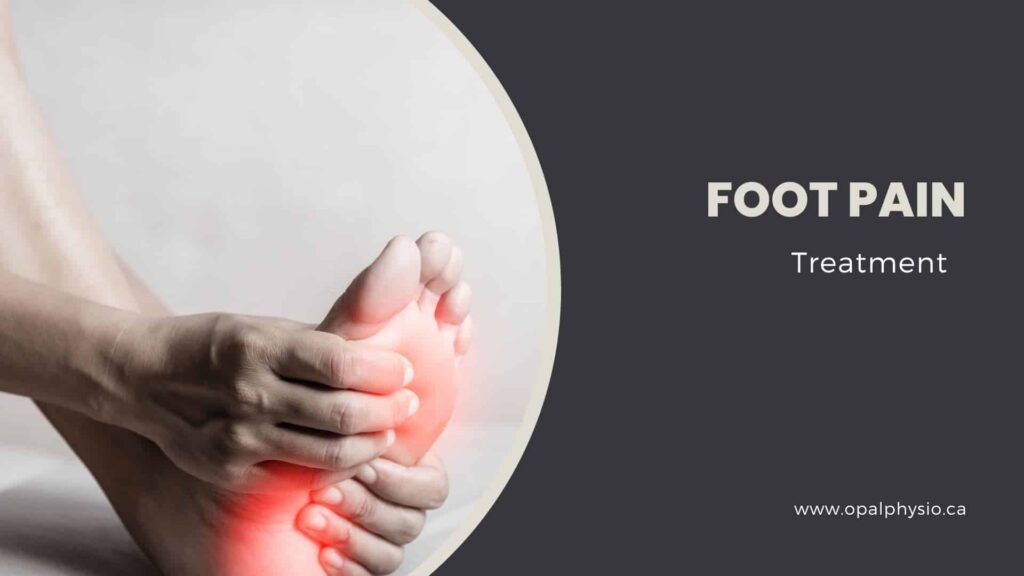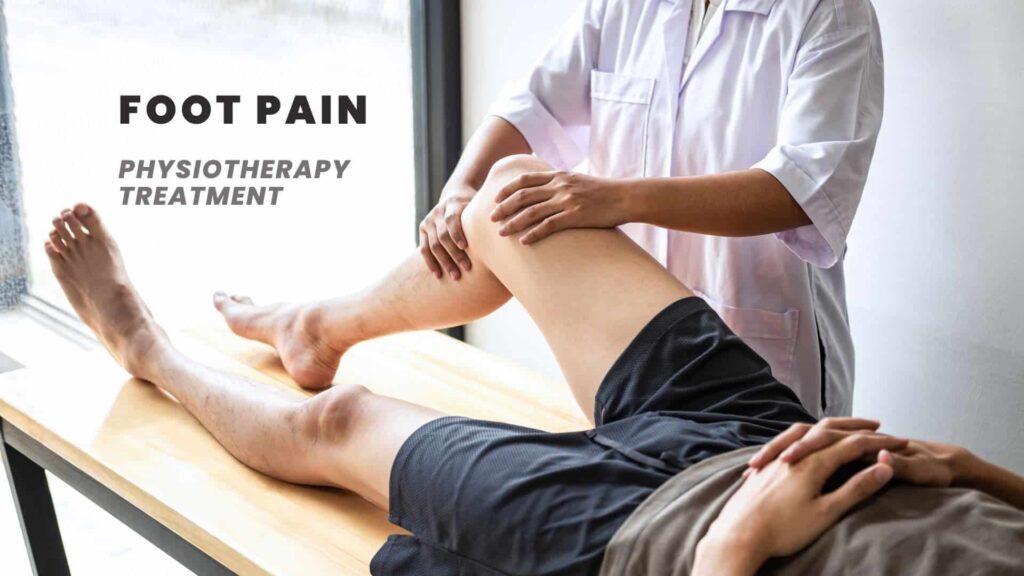Foot Pain Physiotherapy Treatment
Foot Pain Relief
You are not alone if you struggle with foot pain that interferes with your everyday life. Foot pain is the most common ailment that many people have. It affects people of all ages and is usually caused by injury, illness, prolonged activities, arthritis, strains, sprains, nerve issues, or bone deformities.
Pain in the foot can be debilitating and often difficult to manage. Physiotherapy treatments for foot pain involve different modalities and techniques to help heal the injury and get back on your feet sooner.
At Opal Physio, we provide comprehensive physiotherapy treatment for foot pain. Our experienced physiotherapists are dedicated to helping you alleviate your foot pain and improve your overall foot health.

Why foot pain?
The foot is a complicated structure, containing several bones, joints, muscles, tendons, and ligaments. It is one of the few places in the body where the foot supports our weight for long. Foot Pain is a feeling of discomfort and pain in the foot experienced at one or more points on the feet. The causes and symptoms of foot pain vary from person to person.
Symptoms
- Pain in the heel, toes, arch, instep, or sole of the foot
- Swelling, numbness, or tingling
- Burning, stinging, or electric-like sensations
Causes of foot pain
Arthritis
Arthritis is a condition that causes inflammation in the joints, leading to pain and stiffness.
Gout
Gout is a common and complex form of arthritis characterized by sudden, severe attacks of pain, swelling, redness, and tenderness in one or more joints, most often in the big toe. The pain will likely be most severe within the first four to 12 hours after it begins, and the affected joint or joints become swollen, hot, and tender.
Fracture
A fracture in the foot can cause immediate, throbbing pain, swelling, bruising, tenderness, and deformity. Fractures can range from tiny cracks in the bones to breaks that pierce the skin. The seriousness of a broken foot varies, and treatment depends on the exact site and severity of the fracture.
Bunions
A bunion is a painful, bony bump that forms outside the base of the big toe when some of the bones in the front part of the foot move out of place. This causes the tip of the big toe to get pulled toward the smaller toes and forces the joint at the base of the big toe to stick out. The skin over the bunion might be red and sore, and wearing tight, narrow shoes might cause or worsen bunions.
Overuse injury
Overuse injuries are common in the foot and ankle and are typically caused by repetitive force or overuse, such as running long distances. These injuries can also occur with normal use of a bone weakened by stress fractures or other conditions.
Poorly fitting shoes
Ill-fitting shoes can contribute to many conditions ranging from ingrown toenails to hammertoes and can exacerbate foot problems such as heel pain. Too tight shoes can cause the feet to become compressed and unable to breathe, leading to issues like athlete’s foot.
Prolonged standing or walking
Prolonged standing or walking can cause foot pain due to increased strain on ligaments and tendons, tightness in the calf muscles, and increased stress on the ligaments in the bottom of the feet. This can lead to conditions such as plantar fasciitis.
Trauma
Blunt trauma injuries to the feet can cause pain, inflammation, and swelling. Depending on the location and severity of the injury, the soft tissues and bone areas can become inflamed or swollen, leading to pain in the foot.
Heel spurs
Heel spurs are bony growths on the underside of the heel bone that can cause pain, which patients often compare to a pin or knife sticking into the bottom of their feet when they stand. The pain can progress into a dull ache as the day wears on.
Other specific conditions
- Metatarsalgia: Pain and swelling in the ball of the foot caused by an underlying condition, such as rheumatoid arthritis, gout, and diabetes.
- Sesamoiditis: Inflammation of the two small sesamoids beneath the big toe joint, where the first metatarsal meets the first proximal phalanx.
- Morton’s neuroma: Pain caused by a pinched nerve, usually between the third and fourth metatarsal head.
- Calcaneal apophysitis (Sever’s disease): A condition characterized by heel pain in children, often worsened during high-impact sports and activities that put pressure on a growth plate in the heel.
- Plantar fasciitis: Inflammation of the plantar fascia, a thick band of tissue that runs across the bottom of the foot and connects the heel bone to the toes, causing heel pain.
- Achilles tendinitis: Inflammation of the Achilles tendon, which connects the calf muscle to the heel bone, causing pain and stiffness in the heel and lower leg.
Prevention
To prevent foot pain, consider the following strategies:
- Maintain a healthy weight.
- Improve flexibility by stretching your calf muscles regularly.
- Avoid wearing high heels for extended periods.
- Wear properly fitting shoes with good arch support and cushioning.
- Gradually increase the intensity of exercise and listen to your body.
- Practice foot exercises and stretches to improve strength and flexibility.

Physiotherapy treatment for foot pain
Our physiotherapists in Langley Clinic have the necessary knowledge and skill to assess and treat foot conditions. Our physical therapists will conduct a comprehensive evaluation to determine the cause of your foot pain and create a customized treatment plan to address your needs.
Our physical therapists can help alleviate foot pain through various techniques, such as:
- Manual therapy
- Modalities like heat, ice, ultrasound, laser therapy and electrical stimulation to reduce pain and inflammation.
- Taping techniques
- Strengthening exercises
- Flexibility exercises
- Gait analysis and postural assessment.
In addition to the above-mentioned treatments, our therapist may recommend lifestyle modifications, such as wearing proper footwear and practicing good posture. The primary aim of our physiotherapist is to help identify the cause of your foot pain, reduce pain and help you move and function better.
If you’re experiencing foot pain, consult our Langley physiotherapy team to develop the right treatment plan. Take the first step toward relieving your foot pain; contact us to schedule an appointment.
